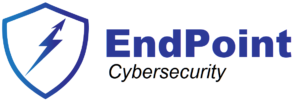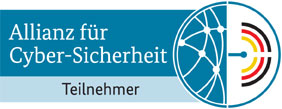The ISO 27000 family of protocols represent a series of standards developed by the International Organization for Standardization (ISO) to address various aspects of information security management. These standards provide a framework for organizations to establish, implement, maintain, and continually improve their information security management systems (ISMS). Each standard within the ISO 27000 family serves a specific purpose and contributes to the overall cybersecurity posture of an organization.
The highlight of the set is 27001 specifying the requirements necessary to implement, maintain and manage an ISMS, within the process of continuous improvement known as PDCA, an acronym for Plan-Do-Check-Act, in relation to the planning, doing, verifying and acting phases.
On the other hand, 27002, is a set of 114 controls, grouped into 14 domains, which aim to facilitate good practices in relation to the management of the ISMS.
Note that the titles written in Italic are industry sector specific.

ISO 27000: Overview and vocabulary
ISO 27000 provides the overview of information security management systems (ISMS). It also provides terms and definitions commonly used in the ISMS family of standards. It is applicable to all types and sizes of organization (e.g. commercial enterprises, government agencies, not-for-profit organizations).
ISO 27001: Information Security Management Systems (ISMS)
ISO 27001 is the cornerstone of the ISO 27000 family, focusing on the establishment, implementation, maintenance, and continual improvement of an ISMS. It provides a systematic approach for identifying, assessing, and managing information security risks, ensuring the confidentiality, integrity, and availability of sensitive information. ISO 27001 helps organizations align their information security practices with business objectives, regulatory requirements, and best practices in the industry.
ISO 27002: Code of Practice for Information Security Controls
ISO 27002 complements ISO 27001 by providing guidance on the selection, implementation, and management of information security controls. It offers a comprehensive set of best practices and security controls organized into categories such as information security policies, organization of information security, human resource security, and asset management. ISO 27002 helps organizations tailor their security controls to specific risks and operational requirements, enhancing the effectiveness of their ISMS.
ISO 27003: Guidelines for the Implementation of an ISMS
ISO 27003 provides guidance on the implementation of an ISMS based on the principles and requirements outlined in ISO 27001. It offers practical recommendations for planning, executing, monitoring, and improving the implementation process, helping organizations navigate the complexities of establishing a robust ISMS. ISO 27003 assists organizations in defining project objectives, roles and responsibilities, and implementation milestones to ensure a successful ISMS deployment.
ISO 27004: Information Security Management Measurement
ISO 27004 focuses on the measurement and monitoring of information security performance within an organization. It provides guidance on defining, implementing, and evaluating key performance indicators (KPIs) and metrics to assess the effectiveness of security controls and the overall ISMS. ISO 27004 enables organizations to gather actionable insights into their information security posture, identify areas for improvement, and demonstrate the value of their security investments to stakeholders.
ISO 27005: Information Security Risk Management
ISO 27005 provides guidelines for conducting risk assessments and managing information security risks effectively. It offers a systematic approach for identifying, analyzing, evaluating, and treating information security risks based on organizational objectives, context, and risk tolerance. ISO 27005 helps organizations prioritize risk mitigation efforts, allocate resources efficiently, and make informed decisions to protect their information assets from potential threats.
ISO 27006: Requirements for ISMS Certification
ISO 27006 specifies requirements for organizations seeking certification of their ISMS against ISO 27001. It outlines the criteria for certification bodies to assess the conformity of an organization’s ISMS with the requirements of ISO 27001 and ensure impartiality, competence, and consistency in the certification process. ISO 27006 provides assurance to stakeholders that an organization’s ISMS meets internationally recognized standards for information security management.
ISO 27007: Guidelines for Information Security Management Systems Auditing
ISO 27007 provides guidelines for auditing information security management systems (ISMS) based on the requirements specified in ISO 27001. It offers recommendations for planning, conducting, and reporting ISMS audits to ensure their effectiveness and compliance with ISO 27001 standards. ISO 27007 helps organizations evaluate the performance of their ISMS, identify areas for improvement, and demonstrate conformance with regulatory requirements and industry best practices. This standard is crucial for ensuring the integrity and reliability of ISMS audits, providing assurance to stakeholders about the effectiveness of information security controls.
ISO 27008: Guidelines for Auditors on Information Security Controls
ISO 27008 provides guidance to auditors on assessing the effectiveness of information security controls within an organization. It offers a framework for evaluating the design, implementation, and operation of security controls based on established criteria and best practices. ISO 27008 helps auditors ensure the adequacy and appropriateness of security controls in mitigating information security risks and safeguarding sensitive information assets. By following the guidelines outlined in ISO 27008, auditors can provide valuable insights and recommendations to organizations for strengthening their information security posture.
ISO 27009: Sector-specific Application of ISO 27001
ISO 27009 provides guidance on the sector-specific application of ISO 27001 for organizations operating in specialized industries or sectors. It offers recommendations for tailoring the requirements of ISO 27001 to meet the unique needs, challenges, and regulatory requirements of specific sectors such as healthcare, finance, telecommunications, and government. ISO 27009 helps organizations enhance the relevance and effectiveness of their ISMS by addressing sector-specific risks and compliance obligations. By aligning with ISO 27009 guidelines, organizations can streamline the implementation of ISO 27001 and achieve greater consistency in information security management across sectors.
ISO 27010: Information Security Management for Inter-sector and Inter-organizational Communications
ISO 27010 provides guidelines for managing information security in inter-sector and inter-organizational communications. It offers recommendations for establishing secure communication channels, sharing sensitive information, and collaborating with external partners, suppliers, and stakeholders. ISO 27010 helps organizations mitigate the risks associated with exchanging information across different sectors and jurisdictions, ensuring confidentiality, integrity, and availability throughout the communication process. By adhering to ISO 27010 guidelines, organizations can enhance trust, transparency, and security in their inter-organizational relationships and collaborations.
ISO 27011: Information Security Management Guidelines for Telecommunications Organizations
ISO 27011 offers guidelines for implementing information security management systems (ISMS) in telecommunications organizations. It provides recommendations for addressing sector-specific risks, threats, and regulatory requirements related to information security in the telecommunications industry. ISO 27011 helps telecommunications organizations enhance the resilience of their networks, systems, and services against cyber threats, ensuring the confidentiality, integrity, and availability of critical communications infrastructure. By following ISO 27011 guidelines, telecommunications organizations can strengthen their security posture, build customer trust, and maintain compliance with industry standards and regulations.
ISO 27012: Guidelines for Cybersecurity
ISO 27012 provides guidelines for managing cybersecurity risks within organizations. It offers recommendations for establishing cybersecurity policies, procedures, and controls to protect against cyber threats and vulnerabilities. ISO 27012 helps organizations develop a proactive approach to cybersecurity, focusing on prevention, detection, and response to cyber incidents. By aligning with ISO 27012 guidelines, organizations can enhance their resilience against evolving cyber threats, minimize the impact of security breaches, and safeguard sensitive information assets. ISO 27012 also promotes collaboration and information sharing among stakeholders to strengthen cybersecurity capabilities and mitigate common threats across sectors.
ISO 27012: Guidelines for Cybersecurity Information Sharing
ISO 27012 provides guidelines for organizations to establish frameworks for sharing cybersecurity information effectively. It offers recommendations for developing policies, procedures, and technical mechanisms to facilitate the exchange of threat intelligence and incident data among stakeholders. ISO 27012 aims to improve situational awareness, enhance threat detection and response capabilities, and foster collaboration within the cybersecurity community. By adhering to ISO 27012 guidelines, organizations can strengthen their cybersecurity posture, mitigate emerging threats, and contribute to a more resilient and secure cyber ecosystem.
ISO 27013: Guidance on the Integration and Implementation of ISMS with ISO 20000-1
ISO 27013 offers guidance on integrating and implementing an Information Security Management System (ISMS) with the requirements of ISO 20000-1, which focuses on IT service management. It provides recommendations for aligning information security practices with service management processes, ensuring consistency and effectiveness in managing IT services and information security risks. ISO 27013 helps organizations enhance the synergy between their ISMS and IT service management initiatives, resulting in improved service delivery, risk management, and customer satisfaction.
ISO 27014: Governance of Information Security
ISO 27014 provides guidance on establishing and maintaining effective governance structures for information security management within organizations. It offers recommendations for defining roles, responsibilities, and decision-making processes related to information security governance, ensuring accountability and oversight at all levels of the organization. ISO 27014 helps organizations establish a culture of security, align information security practices with business objectives, and promote continuous improvement in information security governance. By adhering to ISO 27014 guidelines, organizations can enhance their resilience against cyber threats, improve regulatory compliance, and build trust with stakeholders.
ISO 27015: Information Security Management for Financial Services
ISO 27015 offers guidance on implementing information security management systems (ISMS) in the financial services sector.
ISO 27016: Information Security Management for the Banking and Financial Services Sector
ISO 27016 provides guidance on implementing information security management systems (ISMS) specifically tailored to the banking and financial services sector.
ISO 27017: Cloud Services Security
ISO 27017 provides guidelines for implementing information security controls in cloud computing environments. It offers recommendations for cloud service providers and cloud customers to address security risks associated with cloud services, including data confidentiality, integrity, and availability. ISO 27017 helps organizations establish trust in cloud computing by addressing common security concerns and ensuring compliance with regulatory requirements. By following ISO 27017 guidelines, organizations can enhance the security of their cloud-based systems and data, mitigate risks associated with cloud adoption, and realize the benefits of cloud computing securely.
ISO 27018: Protection of Personally Identifiable Information (PII) in Public Clouds
ISO 27018 focuses on the protection of personally identifiable information (PII) in public cloud environments. It provides guidelines for cloud service providers to implement measures for protecting PII and ensuring privacy compliance in cloud-based services. ISO 27018 helps organizations address privacy concerns associated with cloud computing, establish trust with customers, and demonstrate compliance with data protection regulations. By adhering to ISO 27018 guidelines, cloud service providers can enhance transparency, accountability, and control over PII processing activities, thereby improving customer confidence and satisfaction in cloud services.
ISO 27019: Information security controls for the energy utility industry
ISO 27019 provides guidance based on ISO/IEC 27002:2013 applied to process control systems used by the energy utility industry for controlling and monitoring the production or generation, transmission, storage and distribution of electric power, gas, oil and heat, and for the control of associated supporting processes.
Interplay and Importance in Cybersecurity
The ISO 27000 family of protocols works together synergistically to provide a holistic approach to information security management.
The importance of these standards in cybersecurity cannot be overstated. By adopting the ISO 27000 family of protocols, organizations can strengthen their resilience against evolving cyber threats, enhance their regulatory compliance, and build trust with customers, partners, and regulators.
These standards promote a risk-based approach to information security, enabling organizations to identify and mitigate potential risks proactively, rather than reactively.
Overall, the ISO 27000 family of protocols plays a critical role in elevating cybersecurity practices and promoting a culture of security and resilience in organizations worldwide.
Additional resources
The post The ISO 27000 family of protocols and their role in cybersecurity first appeared on Sorin Mustaca on Cybersecurity.




